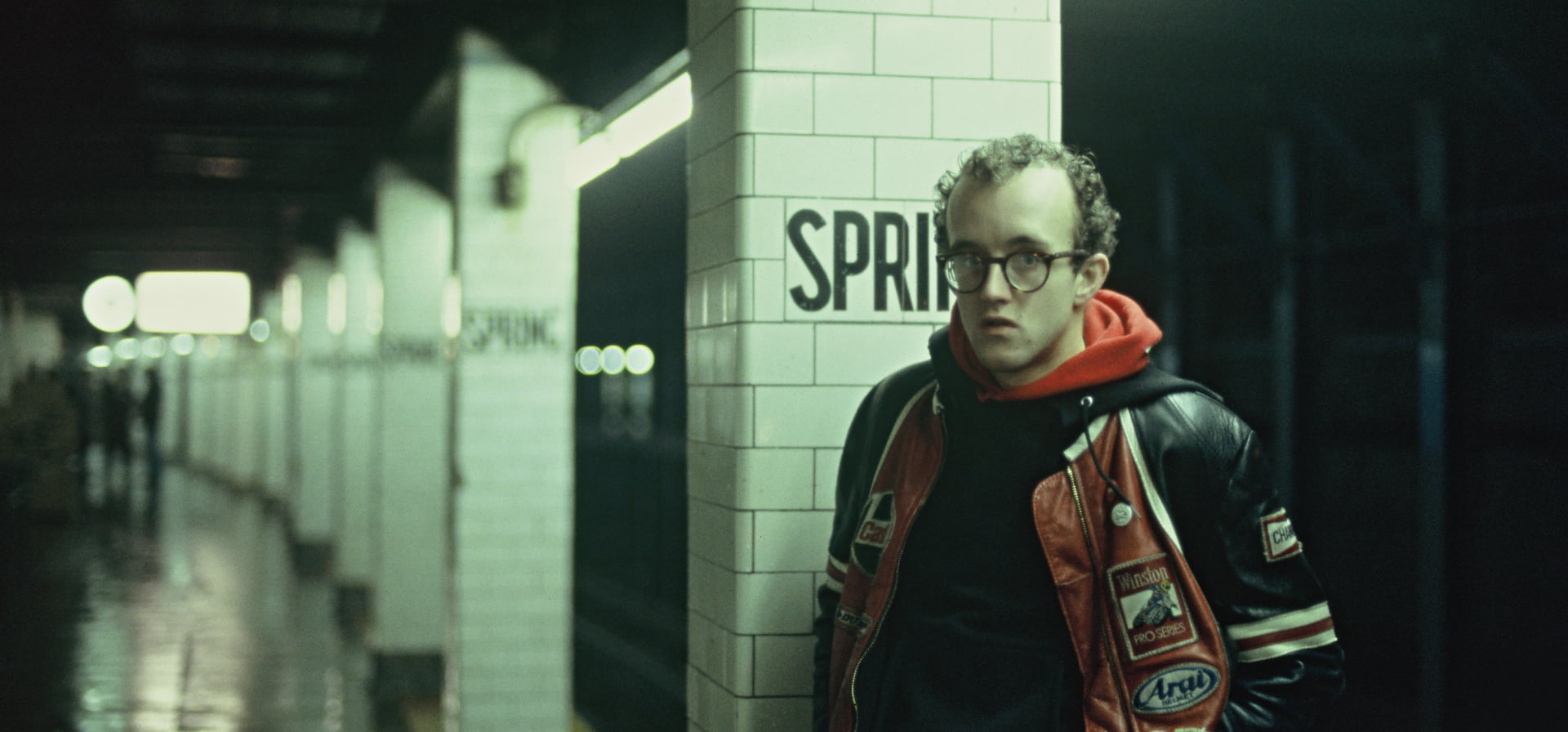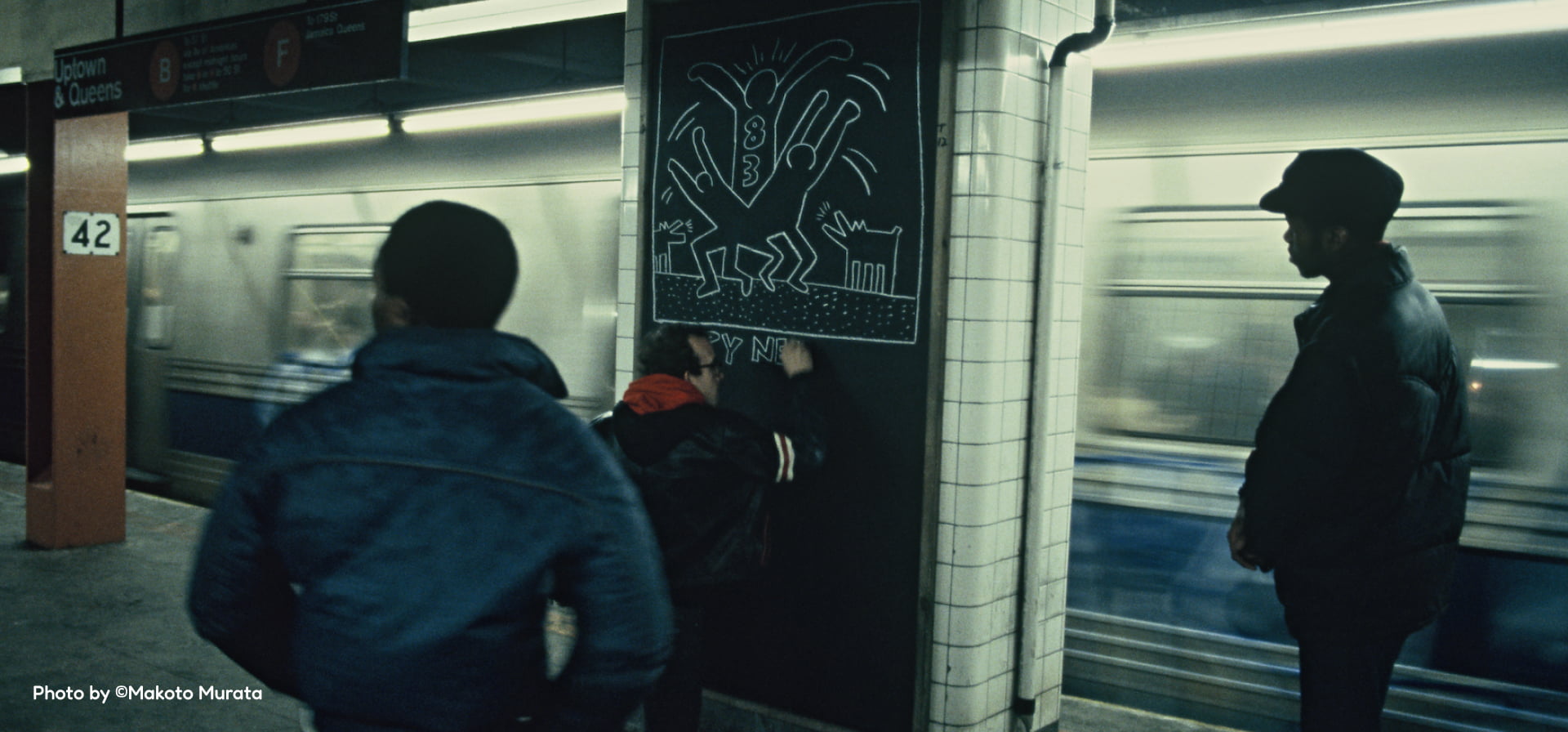ART
KEITH HARING

BIOGRAPHY
Born in Pennsylvania, USA. 1958–1990
Keith Haring is one of the most iconic figures of 1980s American art, celebrated alongside contemporaries like Andy Warhol and Jean-Michel Basquiat. Known for his bold and instantly recognizable style, Haring revolutionized the art world by making his work accessible to all.
In the early 1980s, Haring began his now-famous Subway Drawings in New York City, transforming unused black paper-covered ad spaces in subway stations into canvases for his playful, energetic designs. These works, which were free and visible to everyone, quickly made him a household name, bridging the gap between fine art and street culture.
From 1980 to 1986, Haring’s career took off internationally, with numerous exhibitions that brought him widespread acclaim. His creativity extended beyond traditional art forms—he created animated billboards in Times Square, designed theater sets, and launched the Pop Shop, a shop where people could purchase merchandise featuring his art. For Haring, the Pop Shop wasn’t just a business venture but an extension of his philosophy: making art affordable and accessible to everyone, not just the wealthy.
Haring was also a trailblazer in his personal life. As one of the few openly gay artists of his time, he proudly embraced his identity and used his platform to advocate for LGBTQ+ rights and raise awareness about the AIDS crisis. His art became a powerful vehicle for activism, and he worked tirelessly to inspire social change. Beyond advocacy, Haring’s murals and workshops around the world embodied his belief in art’s ability to connect and uplift communities, especially children.
Haring’s connection to Japan was particularly meaningful. On his first visit in 1983, he held exhibitions and workshops and later opened Pop Shop Tokyo, the second location of his store. This collaboration deepened his bond with Japanese audiences and highlighted the global appeal of his work.
In 1988, Haring was diagnosed with AIDS. The following year, he established the Keith Haring Foundation to support AIDS awareness, education, and children’s programs. Despite his diagnosis, Haring remained prolific and committed to his mission until his untimely passing in 1990 at just 31 years old.

- 1958
- May 4: Born in Pennsylvania, USA.
- 1978
- Enrolled at the School of Visual Arts (SVA) in New York.
- 1980
- Began “Subway Drawings” on advertising panels in New York subway stations.
- 1981
- Held solo exhibitions at Westbeth Painters Space, Hal Bromm Gallery, and Club 57.
- 1982
- First solo exhibition at Tony Shafrazi Gallery. Participated in Documenta 7, an international art exhibition in Germany.
- 1983
- First visit to Japan. Exhibited at the Whitney Biennial.
- 1984
- Exhibited at the Venice Biennale. Started creating murals in locations worldwide, including Australia and Brazil. Held a solo exhibition at Paradise Garage.
- 1985
- Exhibited at the Paris Biennale. Held a solo exhibition at Leo Castelli Gallery.
- 1986
- Opened the Pop Shop in Soho.
- 1987
- Participated in New York’s “Art Against AIDS.” Collaborated with around 500 children to create a mural at Parthenon Tama, a cultural complex in Tama City, Japan.
- 1988
- Opened Pop Shop Tokyo in Aoyama. Diagnosed with AIDS.
- 1989
- Established the Keith Haring Foundation.
- 1990
- February 16: Passed away at his apartment in Greenwich Village at age 31.
May 4: A memorial service was held at the Cathedral of St. John the Divine in New York.
Note:
In the 1980s, “AIDS diagnosis” was commonly used in public discourse, though today we distinguish between an initial HIV diagnosis and AIDS as a later stage of the condition. Here, we italicize AIDS to reflect the historical terminology used at the time.



